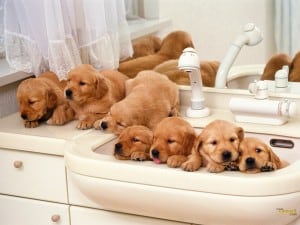From the Desk of Sharda Baker
Good day and welcome everyone!
This is Sharda with another potty train newsletter.
Let’s get to know them more by seeing their appearance
Here we go!
By planning in advance for either puppy potty training or housebreaking an adult dog, the process will be much easier for both the owner and the dog.
Having the right equipment, supplies, cleaning materials and even schedules for food, water and exercise can really help.
Before bringing the dog or puppy home, reviewing the method that you would like to use for potty training your dog is critical to getting the right supplies and other needs.
EQUIPMENT AND SUPPLIES
Since each method of housetraining, crate training, litter training or paper or puppy pad training requires slightly different supplies each section will be discussed separately. While the following lists are meant to be inclusive, you may find that there are additional supplies and materials that you may need depending on your situation.
BASIC SUPPLIES FOR LITTER BOX TRAINING
The basic dog training supplies for litter box training include:
- Appropriately sized litter box – There are some special dog litter boxes but a cat box will work as well. Due to the size small or toy dogs usually can use the standard cat boxes but you may have to build your own for larger dogs. Some Rubbermaid flat plastic storage tubs may work for larger breeds.
- Litter – this can be shredded paper, paper sheets, potty training pad or litter pellets. Remember that potty training pads can be shredded and some dogs will eat litter so care needs to be taken when choosing the correct substrate to use.
- Heavy plastic – it is a good idea to place the litter box on heavy plastic for easy clean up in the case of spills or messes over the edge of the box.
BASIC SUPPLIES FOR PAPER TRAINING
Paper training requires the fewest supplies with just paper or potty training pads placed on the ground in a designated area.
Some of the commercially available potty pads are chemically treated to encourage the dog or puppy to urinate on them and then also are odour absorbent to help control the smell.
With all methods a good quality leash and collar is also important, as are treats and toys for rewards for good behaviour.
I hope that you learned a lot from today’s potty train newsletter
All the best and take care
Warmly,
Sharda Baker

